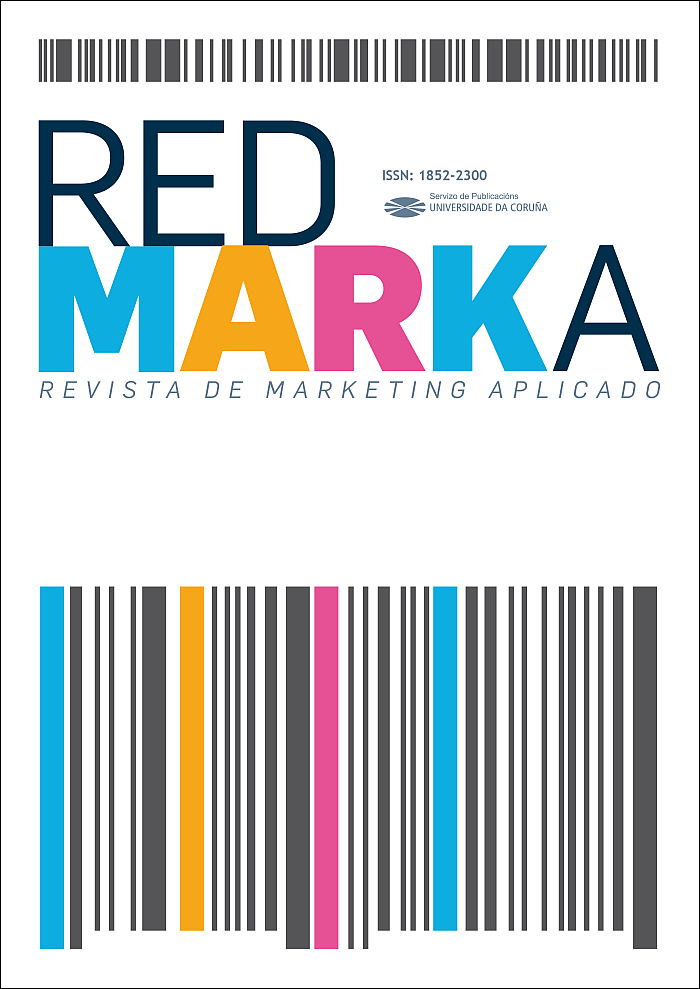Native advertising and disinformation
Main Article Content
Abstract
The aim of this study is to analyse a selection of fake news stories and assess their comparability with native advertising from the point of view of disinformation. The study uses the methodology proposed by Wardle and Derakshan to identify similarities between the forms of disinformation used in the cases presented. The results show that fake news is mainly based on invention of information, while concealment of information sources is commonly found in fake public relations campaigns. Native advertising content is generally classed as truthful information, despite a minority trend towards the distortion of content.
Keywords:
Downloads
Article Details
References
Baines, P., O'Shaughnessy, N., y Snow, N. (Eds.). (2019). The SAGE Handbook of Propaganda. SAGE Publications Limited.
Bakshi, A. C. (2014). Why and how to regulate native advertising in online news publications. Journal of Media Law & Ethics, 4(4). http://www.academia.edu/12383891/Why_and_How_to_Regulate_Native_Advertising_in_Online_News_Publications
Egelhofer, J. L., y Lecheler, S. (2019). Fake news as a two-dimensional phenomenon: a framework and research agenda. Annals of the International Communication Association, 43(2), 97-116. DOI: https://doi.org/10.1080/23808985.2019.1602782
Esteban, A. N. (2020). La lucha de la Unión Europea contra la desinformación y las fake news durante la crisis del coronavirus. Revista de Estilos de Aprendizaje, 13(26), 50-60. https://www.researchgate.net/publication/345312372_La_lucha_de_la_Union_Europea_contra_la_desinformacion_y_las_fake_news_durante_la_crisis_del_coronavirus
Farsetta, D. y Price, D. (2006). Fake TV News. Center for Media and Democracy. https://www.voltairenet.org/IMG/pdf/NFNPDFExt6.pdf
Froehlich, T. J. (2017). Anàlisi no tan breu de l'estat actual de l'ètica de la informació: ètica de la ignorància, informació incompleta, falsa i falsejada i altres formes d'engany i incompetència. BiD: textos universitaris de biblioteconomia i documentació, (39), 3. DOI: https://doi.org/10.1344/BiD2017.39.7
Jahng, M. R., Lee, H., y Rochadiat, A. (2020). Public relations practitioners’ management of fake news: Exploring key elements and acts of information authentication. Public Relations Review, 46(2). DOI: https://doi.org/10.1016/j.pubrev.2020.101907
Lazer, D. M., Baum, M. A., Benkler, Y., Berinsky, A. J., Greenhill, K. M., Menczer, F., Metzger, M. J., Nyhan, B., Pennycook, G., Rotshchild, D., Schudson, M., Sloman, S. A., Sunstein, C. R., Thorson, E. A., Watts, D. J., y Zittrain, J. L. (2018). The science of fake news. Science, 359(6380), 1094-1096. DOI: https://doi.org/10.1126/science.aao2998
Lee, J., Kim, S., y Ham, C.-D. (2016). A boudlbe-edgge sword? Predicting consumers’ attitudes toward and sharing intention of native advertising on social media. American Behavioral Scientist 60(12), 1425-1441. DOI: https://doi.org/10.1177/0002764216660137
McNair, B. (2017). Fake news: Falsehood, fabrication and fantasy in journalism. Routledge.
Quijandría, E. (2020). Análisis de publicidad nativa en redes sociales y su influencia en el branding. Redmarka. Revista de Marketing Aplicado, 24(1), 17-37. DOI: https://doi.org/10.17979/redma.2020.24.1.5839
Tandoc Jr., Lim, Z. W., y Ling, R. (2018). Defining “fake news” A typology of scholarly definitions. Digital journalism, 6(2), 137-153. DOI: https://doi.org/10.1080/21670811.2017.1360143
Schauster, E. E., Ferrucci, P., y Neill, M. S. (2016). Native advertising is the new journalism: How deception affects social responsibility. American Behavioral Scientist, 60(12), 1408-1424. DOI: https://doi.org/10.1177/0002764216660135
Schmermund, E. (2018). Confronting Disinformation. Cavendish Square Publishing, LLC.
Shu, K., Wang, S., Lee, D., y Liu, H. (2020). Mining Disinformation and Fake News: Concepts, Methods, and Recent Advancements. En Alhajj, R., Glässer, U., Liu, H. Wittek, R., & Zeng, D. (Eds.), Lecture Notes in Social Networks (pp. 8-19). Springer. DOI: https://doi.org/10.1007/978-3-030-42699-6_1
Taiminen, K. Luoma-aho, V., y Tolvanen, K. (2015). The transparent communicative organization and new hybrid forms of content. Public relations review, 41(5), 734-743. DOI: https://doi.org/10.1016/j.pubrev.2015.06.016
Valaskivi, K. (2018). Beyond fake news: Content confusion and understanding the dynamics of the contemporary media environment. Hybrid CoE. https://www.hybridcoe.fi/wp-content/uploads/2018/02/Strategic-Analysis-2018-2-February-Valaskivi.pdf
Wardle, C., y Derakhshan, H. (2017). Information disorder: Toward an interdisciplinary framework for research and policy making. Council of Europe report, 27. https://rm.coe.int/information-disorder-toward-an-interdisciplinary-framework-for-researc/168076277c
Wojdynski, B., y Golan, G. J. (2016). Native advertising and the future of mass communication. American Behavioral Scientist, 60(12), 1403-1407. DOI: https://doi.org/10.1177/0002764216660134
Zerfass, A., Verhoeven, P., Moreno, A., Tench, R., y Verčič, D. (2020). European Communication Monitor 2020. Ethical challenges, gender issues, cyber security, and competence gaps in strategic communication. Results of a survey in 44 countries. https://www.communicationmonitor.eu/wp-content/uploads/dlm_uploads/ECM2020-Results-ChartVersion.pdf







